Fragrant basil variety “Basilisk” for marinades and fresh salads
Varieties of vegetable basil, of which there are several dozen in the State Register of the Russian Federation, differ in taste, aroma, bush height, and leaf color. Basilisk, officially listed in 2003, is suitable for growing both in the garden and in pots on windowsills. It is used to prepare marinades, salads, sauces and many hot dishes. The variety requires compliance with certain rules of care.
What type of basil is this?
Basilisk basil has small, green, egg-shaped leaves. The aroma is clove-pepper, which is why it is widely used in marinades and as a salad dressing.
The flowers are white and grow in dense buds. Harvesting begins 60 days after planting.
Brief history of origin and distribution
Basil began to be grown about 5,000 years ago in the territories of modern India and Iran. The plant came to Europe in the 4th century BC. e.
- In Rome Basil was used as a medicine. However, Galen, a Roman scientist, considered this plant to be poisonous. His theory was refuted by Pliny. He argued that the plant does not have poisonous properties, but rather has aphrodisiac qualities.
- In India Basil is still considered a sacred plant. A person should apologize if he accidentally touches it.
- In France by the 18th century, basil had become a major spice widely used in cooking. This spice is added to many modern French dishes.
- To the territory of Russia the plant arrived at the very end of the 17th century.At that time it was used as a medicine. Gradually they began to use it during the preparation of meat dishes.
Differences from other varieties
Basilisk is one of the most compact varieties of basil. It is grown not only in open beds, but also in flower pots. The height of the bushes usually does not exceed 20 cm.
Characteristics and description
Basilisk is an early ripening variety. A distinctive feature is its short stature, which is why it is also grown in apartment conditions.
The plant has dense foliage. The whole green part has a peppery and clove aroma. This variety is considered universal for use in cooking.
Features of the chemical composition
Basil contains many different vitamins and minerals. The seasoning contains the following substances (per 100 g of fresh product):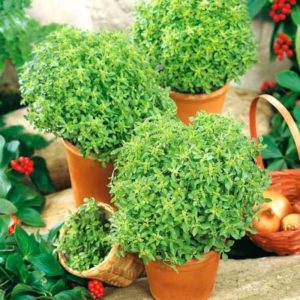
- calcium – 177 mg;
- magnesium – 64 mg;
- vitamin C – 18 mg;
- B vitamins – 13 mg;
- vitamin K – 415 mcg;
- sodium – 4 mg;
- potassium – 295 mg;
- copper – 0.4 mg;
- manganese – 1.1 mg;
- phosphorus – 56 mg;
- iron – 3.2 mg;
- zinc – 0.8 mg;
- selenium – 0.3 mcg.
This composition has a beneficial effect on human health. 100 g of fresh leaves contain 27 kcal. Dried basil has an energy value of 250 kcal per 100 g.
The composition of the plant activates the nervous system and also strengthens the immune system. In addition to cooking, it is used to treat respiratory, fungal, viral, and bacterial diseases.
Durability
The plant grows well in moist soil, but has difficulty tolerating dry soil. It needs frequent watering.
It is advisable that the temperature is no higher than +25°C. Otherwise, the bush becomes susceptible to disease.
Under favorable conditions and proper care, the plant is resistant to infections and pests.
Taste and aroma qualities
All green part The variety has a delicate taste and pleasant aroma. In dishes, the properties of Basilisk appear gradually. At first the plant gives off a slight bitterness, and then a sweet aftertaste appears.
The spice goes well with other spices. If you mix it with rosemary, it will give off a peppery smell.
Range of application of the variety
The Basilisk variety is used in many dishes, as this spice is universal. It is added to salads, drinks, marinades, soups, meat and fish dishes. Basilisk also goes well with all vegetables.
Growing technology
For cultivation, high-quality planting material is used. The seeds must be whole and large. They are soaked for 8-10 hours in a weak solution of potassium permanganate or ash, and then dried.
Basil is light-loving, so containers with soil are placed on southwest or southeast windows.
Optimal conditions
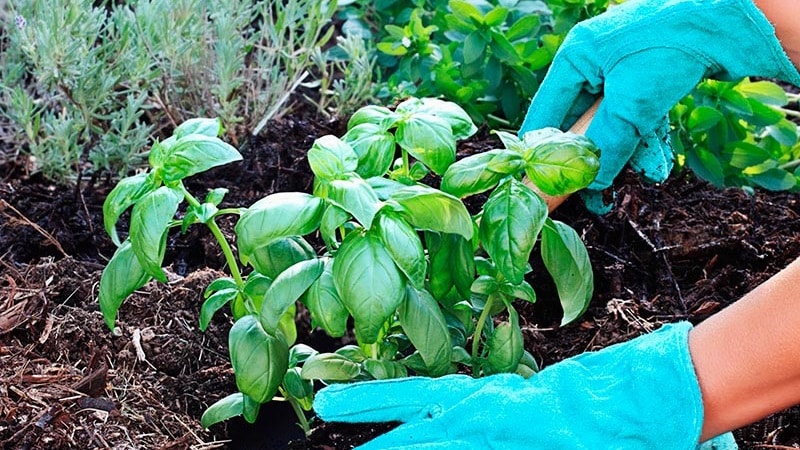
The minimum duration of daylight is 12 hours. Because of this, in winter and autumn the plant is additionally provided with lighting. Use fluorescent lamps or special phytolamps.
The most suitable temperature is +20…+25°C. Also be sure to monitor the humidity. On hot summer days, the bushes are regularly sprayed. Otherwise, the leaves dry out. The best place to grow basil is in the kitchen.
In summer, make sure the soil is constantly moist. Watering is carried out as it dries. Cold water should not be used for irrigation. It should be around +30°C.
Fertilizing is carried out with any fertilizers that contain humus. This procedure is performed after pruning so that the plant recovers faster.
Landing dates and rules
Basil is planted in open ground in the spring, when the night temperature does not fall below +5°C.The spice is grown in the apartment all year round. The main thing is to provide enough light.
Make a trench 2 cm deep in the ground and pour the seeds into it. The distance between them is 1 cm. The first shoots will appear in about a week.
Further care
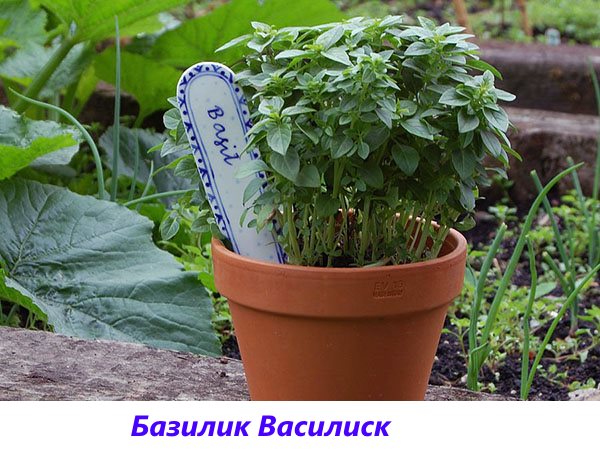
For normal development, basil requires constant care:
- During growth, be sure to fertilize several times. To do this, use ash, humus, compost, and nettle infusion. It is advisable to use only organic fertilizers, since the spice is used for cooking. The first fertilizing is carried out a week after the appearance of the first shoots. Then it is repeated every month.
- The culture is moisture-loving. From landing It requires abundant watering before harvesting. Make sure the soil is always slightly moist.
- Approximately 4 weeks after the appearance of the first shoots, they begin to harvest. All shoots that have reached a height of 20 cm are cut off. After this, the plant is fertilized so that it does not wither and continues to grow.
- The soil is loosened throughout the entire growth period. Loosening is carried out shallowly so as not to disrupt the process of germination of layering and not to damage the root system. This procedure promotes the supply of oxygen to the roots, which helps the development of basil.
Possible problems, diseases, pests
The most common and dangerous plant diseases:
- Blackleg. This is a fungus that appears when there is excessive watering or increased acidity of the soil. The stem turns black and the plant dies. This happens due to blockage of the vessels feeding the plant.
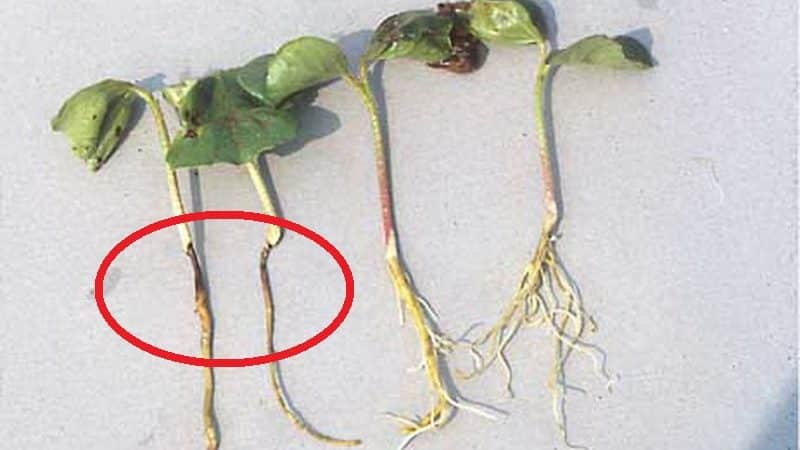
- Fusarium. The fungus often attacks young plants and produces toxins. The top dries out, after which the bush dies. The disease develops due to excessively high room temperatures.
- Gray rot. It usually affects plants grown in greenhouses and greenhouses. But those specimens that are in an apartment or in the open ground can also get sick. The affected areas of the bush are covered with light brown spots. For treatment in the early stages, an infusion of onion peels is used.
The most common parasites are:
- Aphid. The leaves gradually curl up and the stem stops growing due to the fact that the parasite sucks out the nutritious juice. Aphids are removed using a decoction of garlic, onion, wormwood or yarrow. Treatment is carried out once a week for 3 weeks.
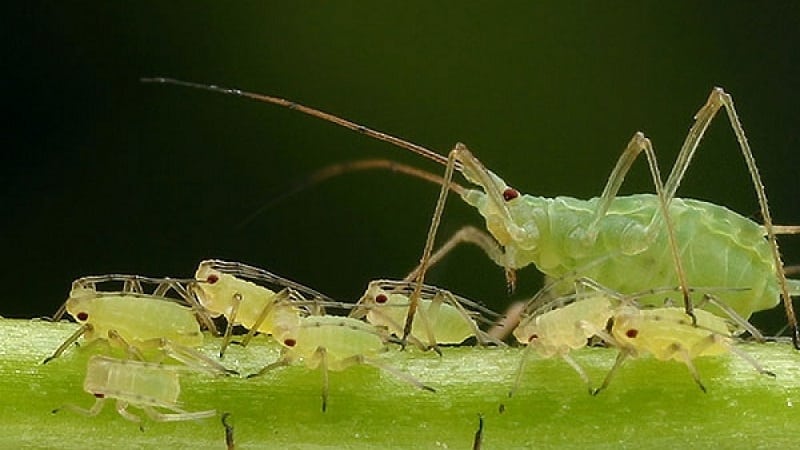
- Field bug. It also feeds on plant sap. Signs of damage are white spots on the surface of the leaves. Gradually they become dark. To destroy the pest, the same means are used as for aphids.
Preventive actions:
- Every week the soil is treated with a small amount of deciduous tree ash.
- The soil in the pots is regularly loosened.
- Make sure that watering is moderate. You should not overdo it with water, but the soil should not dry out.
- Affected branches are promptly removed.
Features of growing seedlings
Growing basil from seedlings - a more complex process, but thanks to this the harvest is obtained much earlier. Most often, this method is used when greens are prepared for sale.
First of all, the seeds are soaked in potassium permanganate or ash solution for 4-6 hours. After this, the soil is prepared. 30% pure sand and 15% peat are added to ordinary soil. Such a substrate will be fertile and loose.
A 2 cm drainage layer is poured into the bottom of the pot. Crushed stone and small stones are used as drainage. After this, the container is filled with prepared soil.
The seeds are planted to a depth of 1-2 cm. After about 5-7 days, the first shoots will appear.If peat or humus has been added to the soil, then fertilizers are not used. In this case, only monitor humidity. When the seedlings reach a height of 5-8 cm, the seedlings are transplanted into open ground.
In the greenhouse
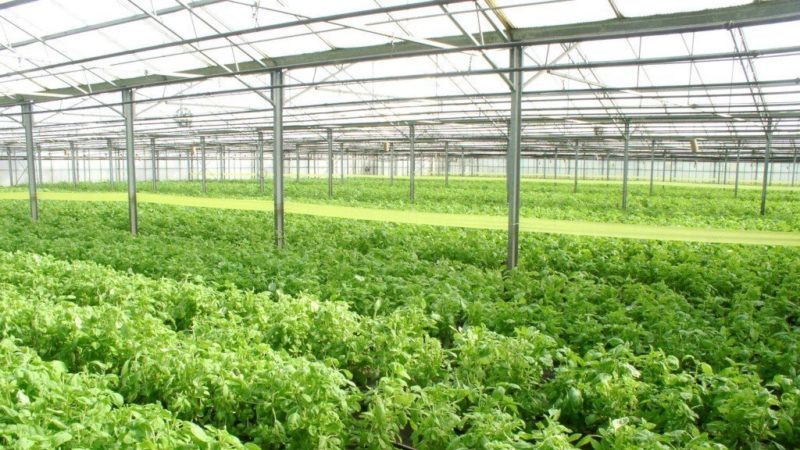
Wooden or plastic boxes are used to grow crops in a greenhouse. They are pre-treated with a 3% solution of copper sulfate.
After this, fertile soil is prepared. They take 25% ordinary soil, 25% humus, 10% crushed stone and 40% sand. The mixture is thoroughly mixed, placed in a box and leveled. Then make shallow furrows (about 2 cm). The distance between the rows is 6 cm. The seeds are sown, sprayed with a spray bottle and sprinkled with earth. After this, everything is watered and covered with film.
In the first 4 weeks after germination, the plants are thoroughly watered. After this, the amount of water is reduced so as not to stimulate the development of fungal diseases.
Advantages and disadvantages of the variety
The main advantages of the Basilisk variety:
- Versatile. It is used for meat, fish and vegetable dishes.
- Both leaves and stems have a great aroma.
- The variety is resistant to diseases and pests.
- The small size of adult bushes allows you to grow basil on a windowsill.
A relative disadvantage is the small size of the bush. For this reason, the yield per unit area is reduced when compared with other varieties.
Reviews from summer residents
Summer residents speak mostly positively about the culture.
Irina, Moscow region: “I planted seedlings in February. The shoots are good, but they are not simultaneous. Because of this, I had to illuminate it one by one, since I only have one phytolamp. It took a lot of effort, but by summer the bushes grew 25 cm long. The aroma is strong and pleasant. The taste is good with a pleasant bitterness.”
Maria, Krasnoyarsk: “I really wanted to grow basil in my apartment. I had never planted anything on a windowsill before, but was confident of success. The store advised me to take the Basilisk variety for this. I also bought ready-made fertile soil. After planting, the pot was covered with film. Every day I took it off for about half an hour so that the earth could breathe. After germination, the sprouts began to stretch out. They were thin and long. When I installed the phytolamp, they quickly returned to normal. After 2 months, I reaped a good harvest of aromatic spices.”
This is interesting:
Review of the vegetable variety of purple basil "Ararat".
What are the benefits of basil essential oil and how to use it correctly.
Conclusion
Basil Basilisk grows well in open ground, in a greenhouse and in pots on the windowsill. In the latter case, the main thing is to provide the plant with enough light, fertilize it and monitor the humidity level.